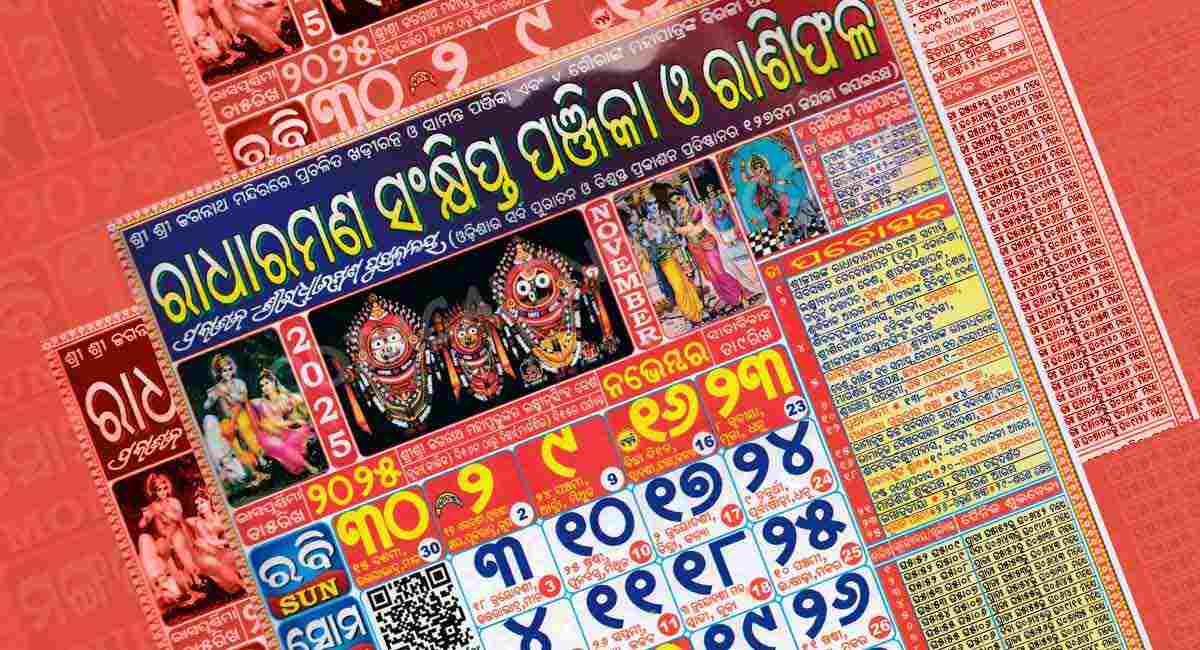Odia Calendar Insights: How It Differs Across India
The Odia calendar, also known as the “Odia Panchang,” is an integral part of the cultural and religious identity of the people of Odisha, India. While India follows a variety of regional calendars, each associated with a distinct tradition or spiritual practice, the Odia calendar has some unique features that set it apart from the rest of India. The main distinctions between the Odia calendar and other regional calendars in India will be examined in this blog.
The Basis of the Odia Calendar
Based on the moon’s and sun’s movements, the Odia calendar is a luni-solar calendar. Like most regional calendars in India, it incorporates solar and lunar elements, but what makes the Odia calendar unique is its deep connection to Odisha’s cultural and religious festivals.
The Odia calendar is structured into 12 months, each corresponding to a different solar or lunar period. Still, unlike other Indian calendars (such as the Vikram Samvat or the Tamil calendar), the names and alignment of the months differ. The Odia calendar’s months are intimately related to the customs and agricultural cycles of the area.
Month Names in the Odia Calendar
One of the most striking differences between the Odia calendar and other regional calendars is the names of the months. In the Odia calendar, the months have names unique to Odisha, derived from both Sanskrit and regional linguistic influences. Here’s a list of the Odia months:
- Chaitra (March-April)
- Baisakh (April-May)
- Jyeshtha (May-June)
- Ashadha (June-July)
- Shravana (July-August)
- Bhadra (August-September)
- Ashwin (September-October)
- Kartika (October-November)
- Margashira (November-December)
- Pushya (December-January)
- Magha (January-February)
- Phalguna (February-March)
As you can see, the names of the months in the Odia calendar are distinct and do not directly align with those in the Gregorian calendar or the calendars of other regions like Tamil Nadu or Maharashtra.
The Year Beginning (Odia New Year)
The Odia calendar marks its New Year in the month of Chaitra, which usually falls around April 14th or 15th, coinciding with the spring season. This differs from how people in other parts of India observe the New Year. For instance, people celebrate the Vikram Samvat New Year in the month of Chaitra, though the date of the year’s transition might slightly vary.
The first day of Chaitra is celebrated as “Pana Sankranti” in Odisha. The significance of this day is rooted in ancient rituals and the worship of Lord Jagannath, the state’s presiding deity. Devotees prepare pana, a traditional drink of fruits, herbs, and spices, to celebrate this day.
Solar and Lunar Influence
While the Odia calendar, like the other regional calendars in India, is luni-solar, the precise calculations and how they affect the months and festivals differ. In Odisha, the lunar months are aligned with the solar months, which means that both the full moon (Purnima) and new moon (Amavasya) play a significant role in marking time.
For example, festivals such as Rath Yatra, Durga Puja, and Diwali follow the lunar phases in Odisha. But celebrating these festivals in Odisha often takes a unique twist, with specific rituals, customs, and dates tied to Odisha’s lunar calendar.
Major Festivals and Their Ties to the Odia Calendar
The Odia calendar also includes a unique set of festivals celebrated with great fervor in Odisha, which have a deep connection to the lunar and solar movements.
- Rath Yatra: Perhaps the most famous festival in Odisha, the Rath Yatra takes place on the 2nd day of Ashadha (typically in June-July). Devotees dedicate this festival to Lord Jagannath, and they organize a grand procession in Puri that attracts millions of people every year. They celebrate Rath Yatra according to the lunar phase, beginning on the new moon day.
- Durga Puja: In Odisha, people celebrate Durga Puja in the month of Ashwin, following the lunar calendar. It is one of the most elaborate festivals in the state, involving beautifully adorned idols of Durga and various forms of worship.
- Makar Sankranti: Although people celebrate Makar Sankranti across India, it holds special significance in Odisha, as they mark the sun’s transition into Capricorn. People in Odisha celebrate it during Pousha by flying kites and offering sesame sweets to the sun god.
- Diwali: According to the Odia calendar, Diwali, the festival of lights, is observed during Kartika, which is usually in October or November. Diwali in Odisha has unique rituals, including worshiping Lord Ganesh and Lakshmi and lighting lamps (diyas) in homes and temples.
Regional Influence and Cultural Significance
What makes the Odia calendar stand out is its strong cultural link to the land and people of Odisha. It aligns the agricultural practices with religious observances. For example, Baisakh marks the beginning of the harvest season, and the festivals often coincide with agricultural rituals and thanksgiving to the gods.
In comparison, other regional calendars like the Tamil or Bengali calendars might have similar agricultural ties but celebrate different aspects of culture, such as the harvest festival of Pongal or Poila Baisakh, the Bengali New Year.
Final Thoughts
The Odia calendar is a unique system that reflects Odisha’s cultural, religious, and agricultural cycles. With distinct month names and their alignment of lunar and solar phases, it stands apart from other regional calendars in India. Festivals like Rath Yatra, Durga Puja, and Makar Sankranti showcase Odisha’s rich cultural identity. The calendar deeply reflects local traditions, revealing the region’s customs, beliefs, and agricultural practices while highlighting the diversity and significance of India’s regional calendars.


